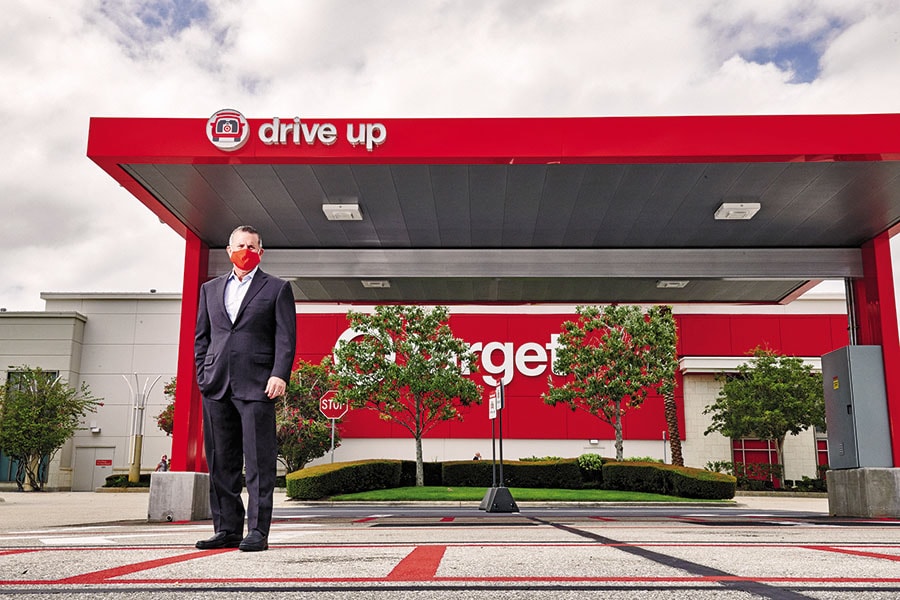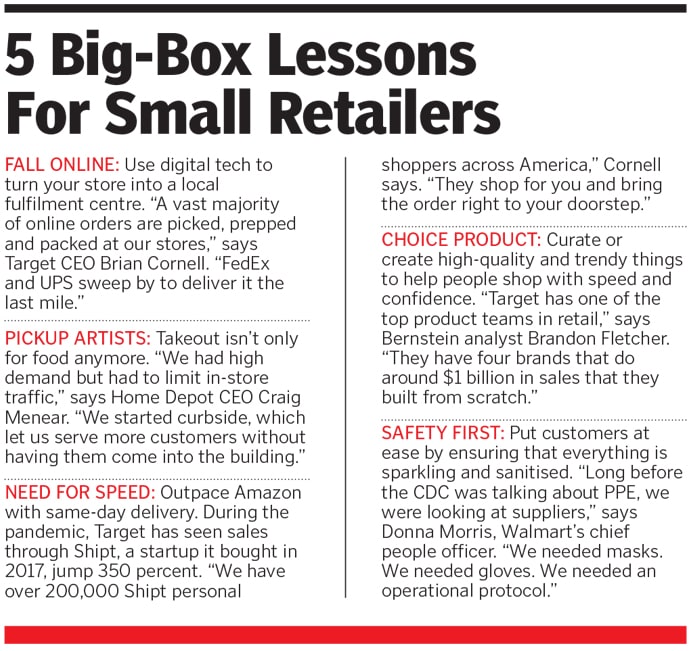
Beating Amazon: The great retail reinvention
Amid the Covid-19 carnage, a handful of innovators have found out how to compete against Amazon and sell in the 21st century. Investors, consumers, and workers are all winning
 Target CEO Brian Cornell at a new curbside pickup station in Sarasota, Florida. “You can place an order, drive into over 1,500 parking lots and our team member will walk out and put it in your trunk, contact-free.”
Target CEO Brian Cornell at a new curbside pickup station in Sarasota, Florida. “You can place an order, drive into over 1,500 parking lots and our team member will walk out and put it in your trunk, contact-free.”
Image: Jamel Toppin for Forbes
In late February last year, Target CEO Brian Cornell was sipping coffee in a Manhattan deli—one eye on the keynote address he was soon to give at an investor conference, the other on his phone as news alerts of America’s first confirmed Covid-19 death buzzed in.
Target’s communications, investor relations and special-events teams had spent months agonising over every detail of the speech, given to 200 Wall Street analysts and journalists and able, in a matter of minutes, to send Target’s stock price climbing—or crashing. Three years ago, Cornell, 61, who took over Target’s top spot in 2014 after running Pepsi’s food business, had caused the company’s shares to plunge 12 percent after analysts scoffed at his bid to counter Amazon by investing $7 billion to upgrade Target’s then-1,800-plus stores and raise worker wages.
Cornell’s contrarian moves had been paying off. Target’s stock had nearly doubled since early 2017, but the Covid news had him on edge. In early January, he had created a task force to monitor the virus. Now it had come to America. Cornell shelved the in-person conference and threw together a virtual one in 48 hours. “I’ll always remember how I got only one question about the virus during the conference,” Cornell says, shaking his head. “And it was whether Chinese production delays would impact our spring line.”
Within a few days, America started locking down, and the retail landscape underwent a seismic shift. Panicked shoppers stripped stores of toilet paper, sanitiser, bleach and bottled water. Amazon, overwhelmed by an enormous increase in orders, floundered: Deliveries were delayed; shipments of non-essential items became, well, non-essential. Negative customer reviews went up by 50 percent. So did allegations of price gouging, with six-packs of Bounty paper towels going for nearly $60 and a tub of 75 Clorox wipes offered for $40. (An Amazon spokesperson says, “Our systems are designed to meet or beat the best available price amongst our competitors, and if we see an error, we work quickly to fix it.”)
With supply chains seizing up and Amazon temporarily stumbling, millions of customers gave other online stores a shot. Smaller, savvy web retailers such as Wayfair and organic food peddler Thrive Market saw business boom. Millions of mom-and-pop operations were finally compelled to move from storefront-heavy strategies to digital ones. Ditto luxury retail, including brands such as Prada and Tory Burch.





